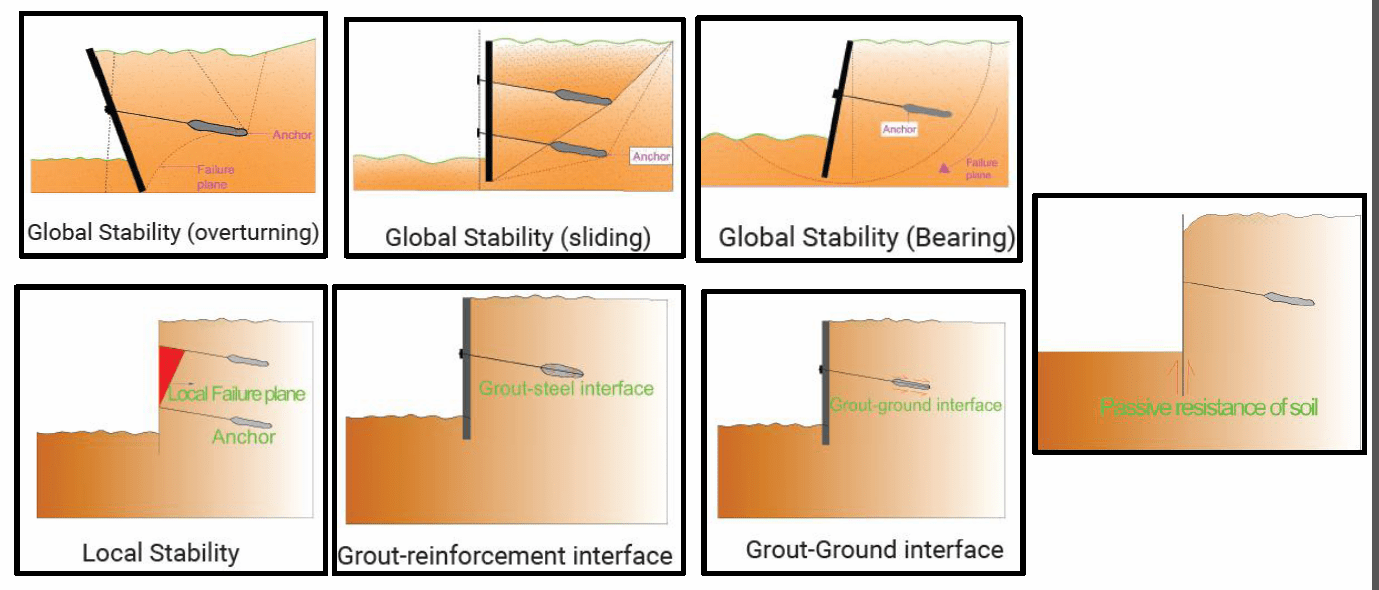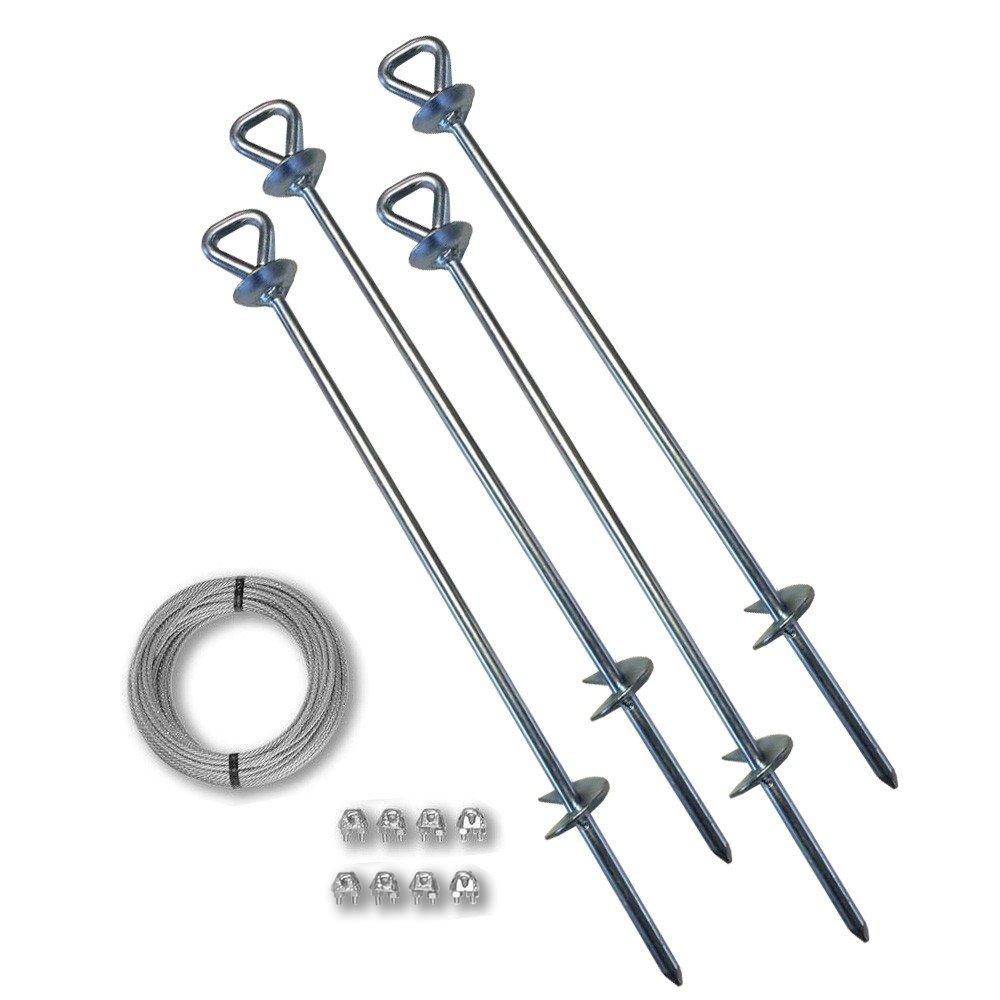Just How Durable Earth Anchors Job: A Comprehensive Guide to Soil Anchoring Solutions
Heavy-duty Earth supports play a vital duty in giving security and support in numerous building and construction applications. By installing deeply into the ground, they withstand lateral and vertical pressures successfully. Different kinds of supports deal with numerous dirt conditions, making them versatile. Understanding their mechanics and setup techniques is essential for taking full advantage of performance. What aspects affect their performance, and exactly how do they contrast to standard techniques? The answers might amaze you.
Understanding Heavy-Duty Earth Anchors
Durable Earth supports work as important elements in various construction and landscape design jobs, giving stability and assistance in challenging dirt problems. These supports function by being installed right into the ground, where they resist upright and lateral pressures. Their design enables safe and secure add-on to frameworks, ensuring they remain secured against soil movement or exterior loads.The efficiency of sturdy Earth supports largely depends upon the kind of soil and the anchor's setup deepness. Correct installment techniques are crucial, as they establish the anchor's holding capacity. Ecological variables, such as wetness and freeze-thaw cycles, can likewise influence performance.These anchors are regularly used in applications varying from protecting fences and keeping walls to supporting short-term structures during adverse weather. Recognizing the principles behind heavy-duty Earth anchors is vital for specialists looking for to enhance the sturdiness and safety of their projects.
Kinds of Heavy-Duty Earth Anchors
Various kinds of heavy-duty Earth supports are created to meet details needs based upon soil conditions and task requirements. Helical anchors, featuring screw-like blades, work in softer dirts, using high tons abilities and simple setup. Driven supports, which are inculcated the ground, are ideal for rocky terrains and offer instant tons support. Tie-back anchors are typically utilized in maintaining wall applications, enabling for lateral support by anchoring right into the ground at an angle. One more type is the cast-in-place support, suitable for concrete applications, as they are incorporated into structures for enhanced stability. Soil screw anchors are functional alternatives that can be used in various dirt types, providing reliable tension and compression abilities. Each kind offers unique applications, making certain security and security in building and landscaping jobs. Comprehending these alternatives permits informed decisions in choosing the suitable Earth anchoring service.
The Mechanics of Soil Anchoring

Recognizing the auto mechanics of soil anchoring calls for an evaluation of various kinds of Earth anchors and their setup methods. Each support type provides one-of-a-kind features that influence its performance in various dirt conditions. Appropriate installment techniques are crucial for maximizing the anchoring system's security and performance.
Types of Earth Anchors
Earth supports, essential parts in soil anchoring systems, come in numerous types, each made for certain applications and soil problems. One of the most usual types consist of screw anchors, which are twisted into the ground, supplying solid lateral resistance. Helical supports include blades that permit efficient installment in numerous soil types, making them suitable for both long-term and short-lived applications. Driven supports, commonly made from steel, are hammered right into the dirt and work in rocky or dense environments. Auger supports utilize a helical design to help with installation in softer dirts. Plate supports consist of a level plate buried horizontally, dispersing tons over a larger area, ideal for applications requiring high tons capabilities in natural dirts.
Setup Strategies Clarified
Correct installment methods are crucial for the performance of dirt anchoring systems. The process usually begins with website evaluation, verifying the selected location can sustain the anchor's load. After determining the correct anchor type, correct hole depth and angle have to be established. The installment includes driving the anchor into the ground making use of specialized devices, such as hands-on or hydraulic chauffeurs, to attain finest embedment. Post-installation, tensioning the support is vital to assure stability; this is typically confirmed with lots testing. Furthermore, surrounding dirt conditions need to be checked to avoid variation. Complying with these methods not just boosts the anchor's efficiency but likewise lengthens its life-span, providing dependable assistance for numerous applications.
Applications of Heavy-Duty Earth Anchors
While heavy-duty Earth supports are often linked with construction and landscape design, their versatility reaches a variety of applications across different sectors. In civil design, they supply necessary support for preserving walls, making sure stability in locations susceptible to dirt disintegration. The aquatic market uses these anchors for protecting docks and marinas, stopping activity created by currents and tides. In addition, in the telecommunications sector, sturdy Earth anchors are significant for stabilizing cell towers and other tall structures against wind pressures. Agricultural applications additionally benefit, as these anchors can protect structures like greenhouses and livestock fencing, guaranteeing they stand up to severe weather. In renewable energy jobs, such as wind ranches, Earth supports play a vital function in safeguarding wind turbine structures, enhancing overall security and performance. This wide range of applications highlights the adaptability and reliability of sturdy Earth anchors throughout various fields.
Benefits Over Traditional Anchoring Methods
Conventional anchoring methods have actually long been relied upon for security, heavy-duty Earth supports provide considerable advantages that enhance performance and performance. One major benefit is their remarkable load-bearing capability, which allows them to withstand higher pressures without failing. This strength makes them excellent for demanding applications, such as in construction and utility installations.Additionally, durable Earth anchors are created for deeper installment, providing greater security in numerous dirt conditions, consisting of sandy or loose dirts. next page Their resistance to deterioration and environmental aspects guarantees a much longer life-span and lowered maintenance expenses contrasted to standard methods.Moreover, these anchors can be mounted with marginal disruption to the surrounding area, maintaining the integrity of the landscape. Generally, durable Earth supports present a efficient and trustworthy option for anchoring requirements, going beyond the constraints commonly connected with standard anchoring techniques.
Setup Refine and Best Practices
The installment procedure for dirt anchoring services begins with extensive prep work and website assessment to ensure peak performance. Following this, a step-by-step installation overview supplies clear instructions for efficient execution (soil anchoring solutions). Following these ideal practices is important for accomplishing long-lasting and reputable anchoring outcomes
Preparation and Website Assessment
Effective prep work and thorough site assessment are crucial steps in the installation of dirt securing remedies. Before installation, the soil kind have to be examined to determine its bearing capacity and viability for securing. Performing a geotechnical survey can provide important information concerning soil make-up, wetness levels, and possible ground movement. Furthermore, recognizing existing structures, greenery, and energies is necessary to stay clear of disturbance during installment. The location should be removed of debris and challenges to assure risk-free accessibility for devices. Weather should also be checked, as damaging problems can impact both security and installment effectiveness. By diligently preparing the website and reviewing all relevant aspects, the likelihood of successful anchor efficiency is considerably raised.
Step-by-Step Setup Overview
A comprehensive setup procedure is vital for attaining excellent performance of dirt securing services. The installation begins with choosing the ideal support kind and assuring the site is clear of debris. Next off, correct opening positioning is established based on tons requirements. When the location is established, openings are drilled to the specified deepness and diameter using the correct tools. The anchor is then put right into the opening, making certain it is aligned correctly. After securing the anchor, soil is backfilled and compacted to improve stability. It is crucial to comply with producer standards throughout the procedure. A post-installation assessment confirms that the anchors are sufficiently positioned and working as planned, giving trusted assistance for the designated application.

Maintenance and Evaluation of Earth Anchors
Normal maintenance and examination of Earth anchors are necessary for making sure long-lasting performance and security. Regular checks permit the early detection of issues such as rust, loosening up, or dirt activity. Inspectors should search for indicators of rust or deterioration on the support components, especially at the link points. Furthermore, the bordering dirt should be assessed for erosion or changes in dampness material, which can impact anchor effectiveness.It is suggested to establish a regular evaluation timetable, preferably at least when a year, relying on ecological problems. Throughout inspections, all visible parts should be cleaned to remove dirt or debris that could hide potential problems. Any kind of indications of distress, such as turning structures or uncommon settling, should prompt immediate evaluation. Proper documents of evaluations can aid in tracking support efficiency over time and assist in timely upkeep actions, making certain the supports remain practical and Read More Here reputable.
Frequently Asked Questions
What Materials Are Heavy-Duty Earth Anchors Normally Made From?
Durable Earth anchors are commonly built from durable materials such as galvanized steel or stainless-steel, making sure toughness and resistance to corrosion. These products supply long-lasting assistance and stability in numerous dirt conditions and applications.
Exactly How Do Soil Conditions Influence Support Performance?
Dirt problems significantly affect anchor efficiency. Variables such as dirt type, wetness content, and compaction impact the anchor's hold and security, with cohesive soils frequently providing much better resistance than loosened or sandy dirts, influencing general performance.
Can Heavy-Duty Earth Anchors Be Reused After Removal?
Sturdy Earth supports can be recycled after elimination, provided they are inspected for damage and wear. Appropriate cleaning and maintenance improve their long life, guaranteeing effective performance in subsequent installments when conditions permit risk-free reinstallation.
What Are the Environmental Effects of Utilizing Earth Anchors?
The environmental influences of using Earth anchors try here include potential dirt disturbance, disturbance of regional ecological communities, and feasible contamination of groundwater. However, if utilized responsibly, their benefits usually exceed these issues, advertising security in numerous applications.
Exactly how Do I Choose the Right Support for My Task?
